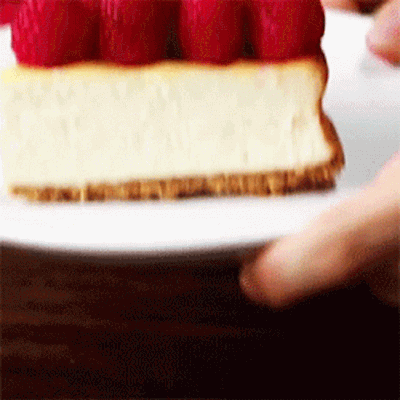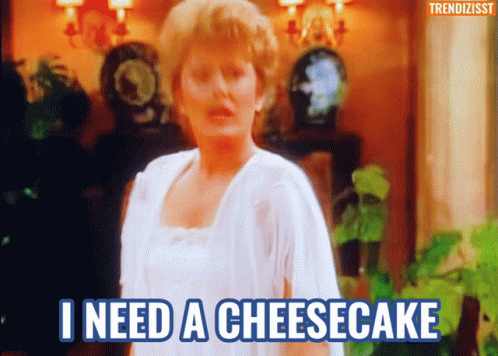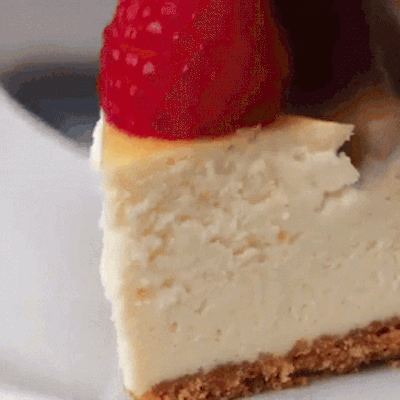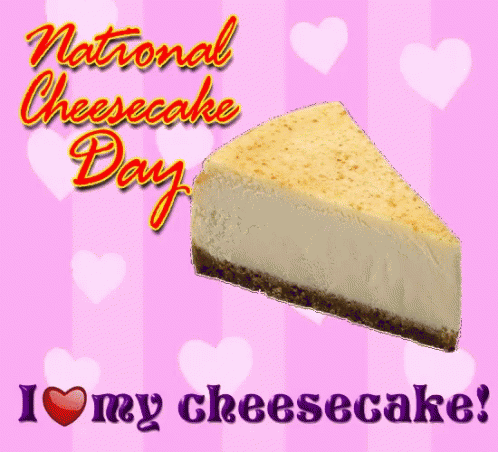🍰 National Cheesecake Day 🍰

National
Cheesecake Day on July 30th
Offers a slice of one of America’s favorite
desserts.

Cheesecake is a sweet dessert consisting of one or more layers. The main, and thickest, layer consists of a mixture of a soft, fresh cheese (typically cottage cheese, cream cheese or ricotta), eggs, and sugar. If there is a bottom layer, it most often consists of a crust or base made from crushed cookies (or digestive biscuits), graham crackers, pastry, or sometimes sponge cake. Cheesecake may be baked or unbaked (and is usually refrigerated).

Cheesecake is usually sweetened with sugar and may be flavored in different ways. Vanilla, spices, lemon, chocolate, pumpkin,
or other flavors may be added to the main cheese layer. Additional
flavors and visual appeal may be added by topping the finished dessert
with fruit, whipped cream, nuts, cookies, fruit sauce, chocolate syrup, or other ingredients.

Culinary classification
Modern cheesecake is not usually classified as an actual "cake", despite the name (compare with Boston cream "pie"). Some people classify it as a torte due to the usage of many eggs, which are the sole source of leavening, as a key factor. Others find compelling evidence that it is a custard pie, based on the overall structure, with the separate crust, the soft filling, and the absence of flour. Other sources identify it as a flan, or tart.

History
An ancient form of cheesecake may have been a popular dish in ancient Greece even prior to Romans' adoption of it with the conquest of Greece. The earliest attested mention of a cheesecake is by the Greek physician Aegimus (5th century BCE), who wrote a book on the art of making cheesecakes (πλακουντοποιικόν σύγγραμμα—plakountopoiikon sungramma). The earliest extant cheesecake recipes are found in Cato the Elder's De Agri Cultura, which includes recipes for three cakes for religious uses: libum, savillum and placenta. Of the three, placenta cake is the most like modern cheesecakes: having a crust that is separately prepared and baked.
A more modern version called a sambocade, made with elderflower and rose water, is found in Forme of Cury, an English cookbook from 1390. On this basis, chef Heston Blumenthal has argued that cheesecake is an English invention.


Light and Creamy Cheesecake Recipe
👇 📽 👇

👇 📽 👇

Le cheesecake, ou cheese-cake, gâteau au fromage au Canada francophone, est une variété nord-américaine de gâteau au fromage. C'est un dessert sucré composé d'un mélange de fromage à la crème, d'œufs, de sucre et de parfums de vanille et/ou de citron, sur une croûte de miettes de biscuits ou une génoise. Ses origines peuvent être tracées jusqu'en Grèce antique : dans Les Deipnosophistes, Athénée de Naucratis cite le poète Callimachus comme ayant un livre d'un certain « Aegimius » contenant des recettes de gâteau de fromage.
Deux recettes de cheesecake aux États-Unis trouvent leurs origines dans les quartiers des immigrants allemands et anglais, surtout à Philadelphie, à New York, chez les Juifs et les Italiens à New York. La version italienne est à base de ricotta. Ce que les Américains appellent aujourd'hui le New York cheesecake est fait avec un fromage industriel, fromage à pâte fraîche salé qui a dû remplacer le Quark allemand (utilisé dans le Käsekuchen). Ce cheesecake a été généralisé par des delicatessens juifs new-yorkais et peut se consommer avec un coulis de fruits rouges. Ce mets se présente sous la forme d’une tarte. Ou directement dans le plat.



.gif)
No comments:
Post a Comment